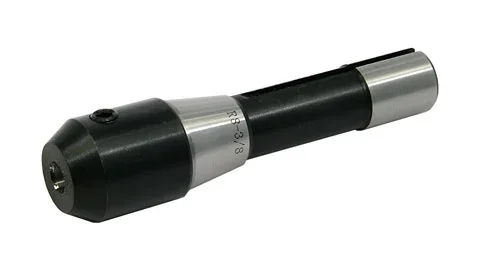I am finishing up the install of a DRO on my Hartford Mill. Now it needs to be commissioned and calibrated.
I already have two mechanical edge finders. But they only work on the X and Y Axis. To be truthful, I'm not sure how the Z-Axis works, but more on that further down.
So I decided to splurge on an electronic X/Y/Z finder. I decided on this one:
Accusize Industrial Tools Electronic Short Shank Edge Finders with Sound Alert, C028-9273 https://www.amazon.ca/dp/B01F44BQDQ/ref=cm_sw_r_apan_i_CWM2FQ1AP1SERQY2SJ5X?_encoding=UTF8&psc=1
It has a 0.4" precision ball on it. The ball is spring loaded so you can't damage it by going a bit too far. It also has both sound and a bright red LED.
Let me just say that for old guys with bad eyes and ears, it was worth the money!
To check accuracy, I used it from both sides of a precision block. This also demonstrates the versatility of the DRO.
Coming from Right to Left, I zeroed my DRO on contact, then rechecked it several times. Totally repeatable within a tenth. Then I plugged in the ball offset (1/2 of the diameter of 0.4 = 0.2) by hitting X, then 0.2, then enter.
Then I repeated the same exercise Left to Right on the block. Exactly 2.2000 inches plus minus a tenth.
Now for the Z. Drum roll please........
Hmmmmm....... Nice ball that allows for precision sensing. But it seems the OP on this thread is an idiot. The edge finder does a great job of finding the top edge, but now what? There is no way to use that edge! Every tool and every collet has adjustable length. There is no collet/spindle to maintain a zero like the X & Y........
The traditional methods is to take a scuff cut using whatever bit you plan to use. But that loses the benefit of the precision ball, the LED, and the Beeper.
In conclusion, it's a nice edge finder and well worth the money, but unless another member has a better idea, it's pretty much useless as an edge finder in Z.
The only idea I can come up with is some kind of insulated fixture and a separate led/beeper. Or maybe put the sensor into a 3/4 inch collet in a 2" collet block and then bring the end mill down to contact the edge finder. But I doubt those collet blocks are all that accurate......
Ideas?
I already have two mechanical edge finders. But they only work on the X and Y Axis. To be truthful, I'm not sure how the Z-Axis works, but more on that further down.
So I decided to splurge on an electronic X/Y/Z finder. I decided on this one:
Accusize Industrial Tools Electronic Short Shank Edge Finders with Sound Alert, C028-9273 https://www.amazon.ca/dp/B01F44BQDQ/ref=cm_sw_r_apan_i_CWM2FQ1AP1SERQY2SJ5X?_encoding=UTF8&psc=1
It has a 0.4" precision ball on it. The ball is spring loaded so you can't damage it by going a bit too far. It also has both sound and a bright red LED.
Let me just say that for old guys with bad eyes and ears, it was worth the money!
To check accuracy, I used it from both sides of a precision block. This also demonstrates the versatility of the DRO.
Coming from Right to Left, I zeroed my DRO on contact, then rechecked it several times. Totally repeatable within a tenth. Then I plugged in the ball offset (1/2 of the diameter of 0.4 = 0.2) by hitting X, then 0.2, then enter.
Then I repeated the same exercise Left to Right on the block. Exactly 2.2000 inches plus minus a tenth.
Now for the Z. Drum roll please........
Hmmmmm....... Nice ball that allows for precision sensing. But it seems the OP on this thread is an idiot. The edge finder does a great job of finding the top edge, but now what? There is no way to use that edge! Every tool and every collet has adjustable length. There is no collet/spindle to maintain a zero like the X & Y........
The traditional methods is to take a scuff cut using whatever bit you plan to use. But that loses the benefit of the precision ball, the LED, and the Beeper.
In conclusion, it's a nice edge finder and well worth the money, but unless another member has a better idea, it's pretty much useless as an edge finder in Z.
The only idea I can come up with is some kind of insulated fixture and a separate led/beeper. Or maybe put the sensor into a 3/4 inch collet in a 2" collet block and then bring the end mill down to contact the edge finder. But I doubt those collet blocks are all that accurate......
Ideas?

